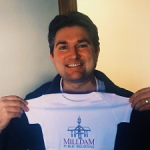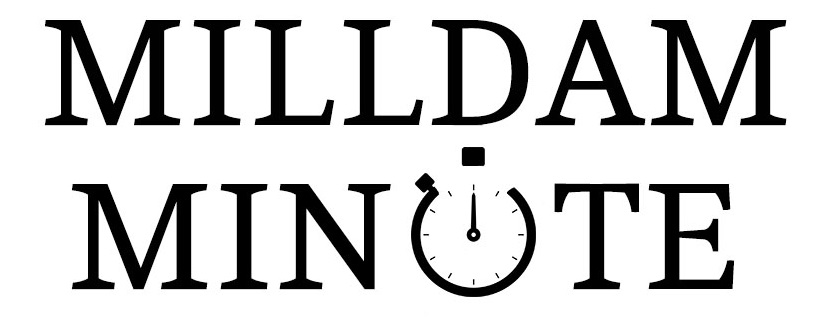As 2016 is rapidly coming to a close, businesses are in the midst of planning for 2017. Mapping out your PR strategy for the next year is a key step in bringing positive attention to your work. It makes sense; most of your other essential departments don’t just “wing it,” right? Finance develops a budget to follow for the year, production creates manufacturing schedules and sets launch dates for new offerings, and marketing maps out what ads and campaigns are set to run each quarter. Any sound Public Relations strategy also needs to be crafted with the same diligence. If you’re new to PR or have only recently hired an agency, this prospect might seem overwhelming. Here are the basic components that every PR plan should incorporate.
Assess the PR Results of the Previous Year
We all need to learn from our mistakes to avoid repeating them. On the upside, trying new strategies can also lead to previously unknown positive results. If your organization received media attention over the last year, take some time to examine whether the message they broadcast is what you’re trying to convey. Did something get lost in translation? If so, identify the steps to avoid the same miscommunication for next year.
You should also be examining what pitches worked well for each outlet that was communicated with. When a press release hits the wire, it’s valuable to learn which reporters are eager to learn about new products in your industry while others might only want to know about how your customers are utilizing them. These details should be incorporated into your new plan to help maximize coverage.
Examine Your Current Place in the Market and Establish Where You Want to Be
Unless you’re part of the lucky few, chances are you’re one of several offering a similar solution to a problem. Take some time for self-evaluation and take an honest look at where you fit in your marketplace to help inform next year’s approach to PR (if this is too difficult or time consuming, analyst firms can be hired to give you an appraisal as well). Who is doing better than you, and more importantly, why? Are there PR strategies that you can replicate?
Apply the Information and Set Goals
For your PR plan, the important piece is analyzing this information and setting a goal for where you want to be by the end of the next year. Once this step is taken, your PR firm can help create a roadmap to get you there. Are you traditionally known for one service, but want to be thought of as a strong player for a new offering? Do you sell a product that is better than the competition by every metric, but no one has heard of it? Has a use for one of your solutions been found in another industry that you’d like to tap? These are all strategic goals that our clients have had, which they’ve been able to achieve with the help of a well-crafted PR plan.
Identify Benchmarks
Now that you understand your place in the market and have established new goals, what incremental benchmarks need to be accomplished to move your business toward additional success? Do you want to create increased awareness about your overall brand with your target audience? Let’s build a campaign around that through event speaking, trade show exhibiting, strategic networking opportunities, and some targeted advertising. Want to become a thought leader in your field? Secure some byline opportunities in noteworthy publications so you can communicate your views. These are only a few examples, but identifying your benchmarks will shape your PR goals and ultimately, your messaging for the next year.
Outline Activities to Meet These Objectives
This is where the detailed plan is crafted. Now that you’ve established both business and PR goals and benchmarks, we can set the actionable steps to accomplish them. These will include:
- Creating a press release calendar for your key news items over the next year
- Identifying opportunities in editorial calendars
- Developing a strategy for those outlets you wish to have a byline in that don’t adhere to an editorial calendar
- Researching the event sponsorships that will generate maximum exposure and the potential for speaking opportunities at them
- Generation of case studies and white papers
- Analyst relations
- Crafting a calendar for social media and blog posts
How do these items fit with your upcoming goals? Which ones need more focus than others? Do you have the bandwidth for case studies and white papers when your trade show budget is so high? These are questions that only you and your PR firm will be able to address and the answers will be tailored to your objectives for the next year.
Define Success and How to Measure It
At this time next year, how will you know if your PR plan has worked? You can always measure column inches, but not everyone measures success by advertising dollars “saved.” Metrics are always helpful and are gaining wider acceptance as PR has become increasingly digital (you should be able to track inbound clicks from the articles you placed in online outlets or effectiveness of a blog on social media by views and engagement). Sponsorship and networking events can be measured by the number of quality leads obtained. Success can also be more broadly defined, such as writing a piece for a widely-read publication that you’ve always wanted to be featured in to further your thought leadership. No matter how you define your PR success, establishing it as part of your PR plan will help keep everyone focused in the year to come.
In following these basic steps, you can begin creating a PR plan for your business for the next year. Just remember, any PR plan is a helpful guide but the details shouldn’t be set in stone. New products may become delayed, publications revise their media calendars, or friendly reporters might leave their outlets. Whatever may happen, remain flexible and adjust your PR plan to meet the circumstances as they develop.
 Brendon Stellman authors the column “Pure BS” and is Vice President, Director of Client Relations for Milldam Public Relations.
Brendon Stellman authors the column “Pure BS” and is Vice President, Director of Client Relations for Milldam Public Relations.




